The sport that builds men of iron
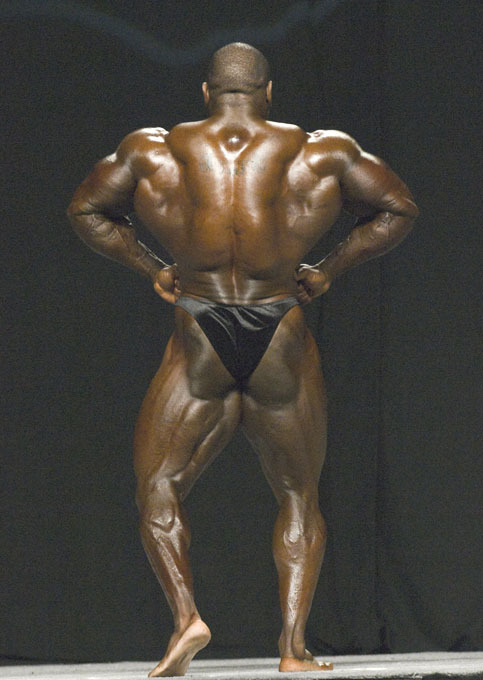
In the modern bodybuilding industry, "professional" generally means a bodybuilder who has won qualifying competitions as an amateur and has earned a "pro card" from the IFBB. Professionals earn the right to compete in sanctioned competitions including the Arnold Classic and the New York Pro (formerly the Night of Champions).
All photos: Splash/All Over Press
In the modern bodybuilding industry, "professional" generally means a bodybuilder who has won qualifying competitions as an amateur and has earned a "pro card" from the IFBB. Professionals earn the right to compete in sanctioned competitions including the Arnold Classic and the New York Pro (formerly the Night of Champions).
All photos: Splash/All Over Press
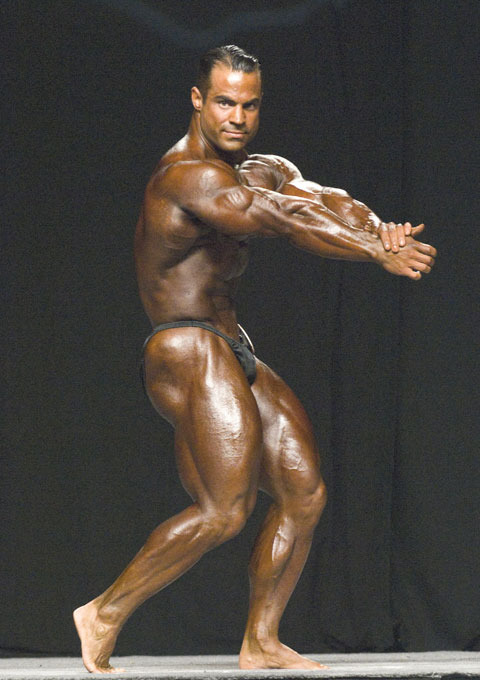
Placings at such competitions in turn earn them the right to compete at the Mr. Olympia; the title is considered to be the highest accolade in the professional bodybuilding field. Steroid testing in these competitions is generally never done
All photos: Splash/All Over Press
Placings at such competitions in turn earn them the right to compete at the Mr. Olympia; the title is considered to be the highest accolade in the professional bodybuilding field. Steroid testing in these competitions is generally never done
All photos: Splash/All Over Press

In competitive bodybuilding, bodybuilders aspire to develop and maintain an aesthetically pleasing body and balanced physique. In prejudging, competitors do a series of mandatory poses - the front lat spread, the rear lat spread, the front double biceps, the back double biceps, the side chest, the side triceps, the most muscular (men only), and the thigh-abdominal pose
All photos: Splash/All Over Press
In competitive bodybuilding, bodybuilders aspire to develop and maintain an aesthetically pleasing body and balanced physique. In prejudging, competitors do a series of mandatory poses - the front lat spread, the rear lat spread, the front double biceps, the back double biceps, the side chest, the side triceps, the most muscular (men only), and the thigh-abdominal pose
All photos: Splash/All Over Press

Each competitor also performs a routine to display the physique. A posedown is usually held at the end of a posing round, while judges are finishing their scoring. Bodybuilders spend time practicing their posing, since they are judged on it.
All photos: Splash/All Over Press
Each competitor also performs a routine to display the physique. A posedown is usually held at the end of a posing round, while judges are finishing their scoring. Bodybuilders spend time practicing their posing, since they are judged on it.
All photos: Splash/All Over Press

In contrast to strongman or powerlifting competitions where physical strength is important, or to Olympic weightlifting, where the main point is equally split between strength and technique, bodybuilding competitions typically emphasize condition, size and symmetry.
All photos: Splash/All Over Press
In contrast to strongman or powerlifting competitions where physical strength is important, or to Olympic weightlifting, where the main point is equally split between strength and technique, bodybuilding competitions typically emphasize condition, size and symmetry.
All photos: Splash/All Over Press

The general strategy adopted by most present-day competitive bodybuilders is to make muscle gains for most of the year (known as the "off-season") and approximately 12-14 weeks from competition attempt to lose body fat (referred to as "cutting") while minimizing the loss of muscle mass. Generally this involves reducing calorie intake and increasing aerobic exercise while monitoring body fat percentage.
All photos: Splash/All Over Press
The general strategy adopted by most present-day competitive bodybuilders is to make muscle gains for most of the year (known as the "off-season") and approximately 12-14 weeks from competition attempt to lose body fat (referred to as "cutting") while minimizing the loss of muscle mass. Generally this involves reducing calorie intake and increasing aerobic exercise while monitoring body fat percentage.
All photos: Splash/All Over Press
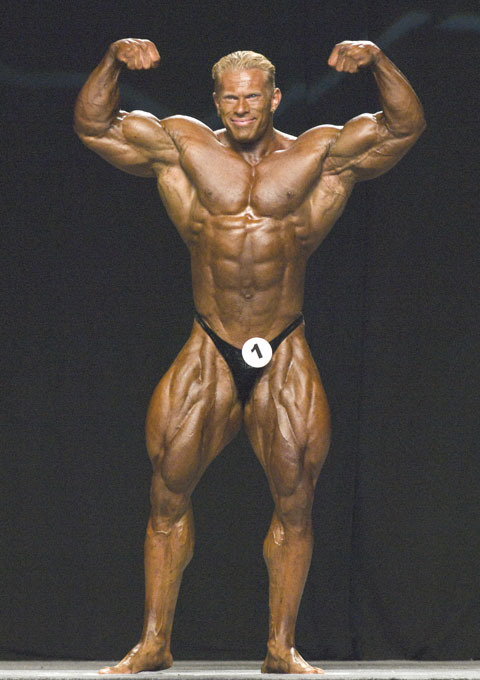
The precise effectiveness of the cutting and bulking strategy is unknown, with only limited observational case studies on the subject. No studies involving precise hypercaloric feeding combined with resistance exercise have been conducted.
All photos: Splash/All Over Press
The precise effectiveness of the cutting and bulking strategy is unknown, with only limited observational case studies on the subject. No studies involving precise hypercaloric feeding combined with resistance exercise have been conducted.
All photos: Splash/All Over Press

In the week leading up to a contest, bodybuilders may decrease their consumption of water, sodium and carbohydrates, the former two to alter how water is retained by the body and the latter to reduce glycogen in the muscle.
All photos: Splash/All Over Press
In the week leading up to a contest, bodybuilders may decrease their consumption of water, sodium and carbohydrates, the former two to alter how water is retained by the body and the latter to reduce glycogen in the muscle.
All photos: Splash/All Over Press
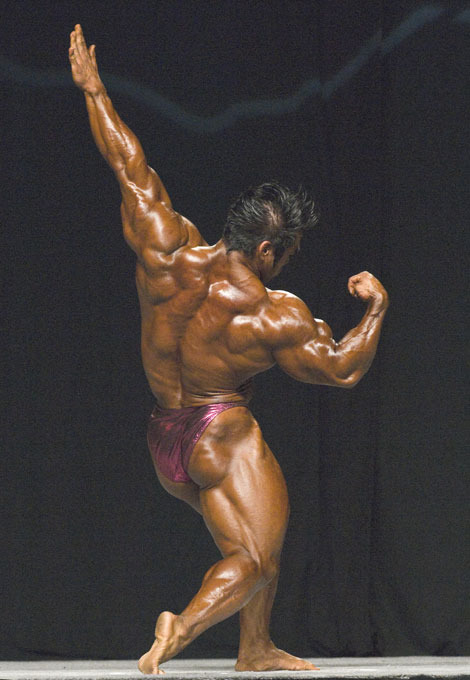
The day before the show, water is removed from the diet, and diuretics may be introduced, while carbohydrate loading to increase the size of the muscles through replenishment of their glycogen. The goal is to maximize leanness and increase the visibility of veins.
All photos: Splash/All Over Press
The day before the show, water is removed from the diet, and diuretics may be introduced, while carbohydrate loading to increase the size of the muscles through replenishment of their glycogen. The goal is to maximize leanness and increase the visibility of veins.
All photos: Splash/All Over Press

The appearance of veins is further enhanced immediately before appearing on stage by darkening the skin through tanning products, applying oils to the skin to increase shine. Some competitors will eat sugar-rich foods to increase the visibility of their veins. A final step is the use of weights to fill the muscles with blood and further increase their size.
All photos: Splash/All Over Press
The appearance of veins is further enhanced immediately before appearing on stage by darkening the skin through tanning products, applying oils to the skin to increase shine. Some competitors will eat sugar-rich foods to increase the visibility of their veins. A final step is the use of weights to fill the muscles with blood and further increase their size.
All photos: Splash/All Over Press

All photos: Splash/All Over Press
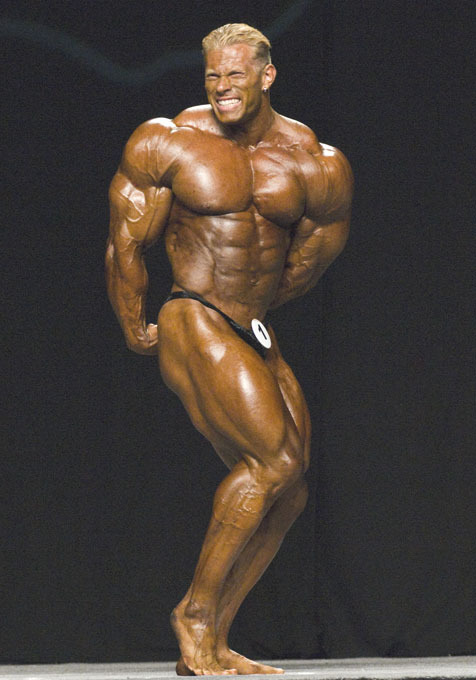
The high levels of muscle growth and repair achieved by bodybuilders require a specialized diet. Generally speaking, bodybuilders require more calories than the average person of the same weight to provide the protein and energy requirements needed to support their training and increase muscle mass. A sub-maintenance level of food energy is combined with cardiovascular exercise to lose body fat in preparation for a contest. The ratios of food energy from carbohydrates, proteins, and fats vary depending on the goals of the bodybuilder
All photos: Splash/All Over Press
The high levels of muscle growth and repair achieved by bodybuilders require a specialized diet. Generally speaking, bodybuilders require more calories than the average person of the same weight to provide the protein and energy requirements needed to support their training and increase muscle mass. A sub-maintenance level of food energy is combined with cardiovascular exercise to lose body fat in preparation for a contest. The ratios of food energy from carbohydrates, proteins, and fats vary depending on the goals of the bodybuilder
All photos: Splash/All Over Press



